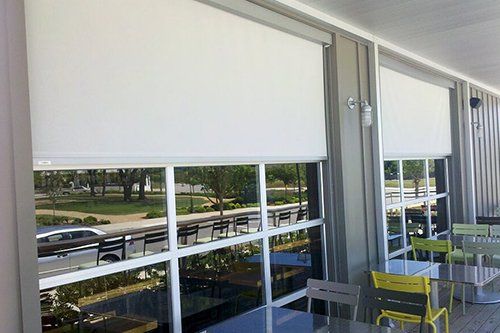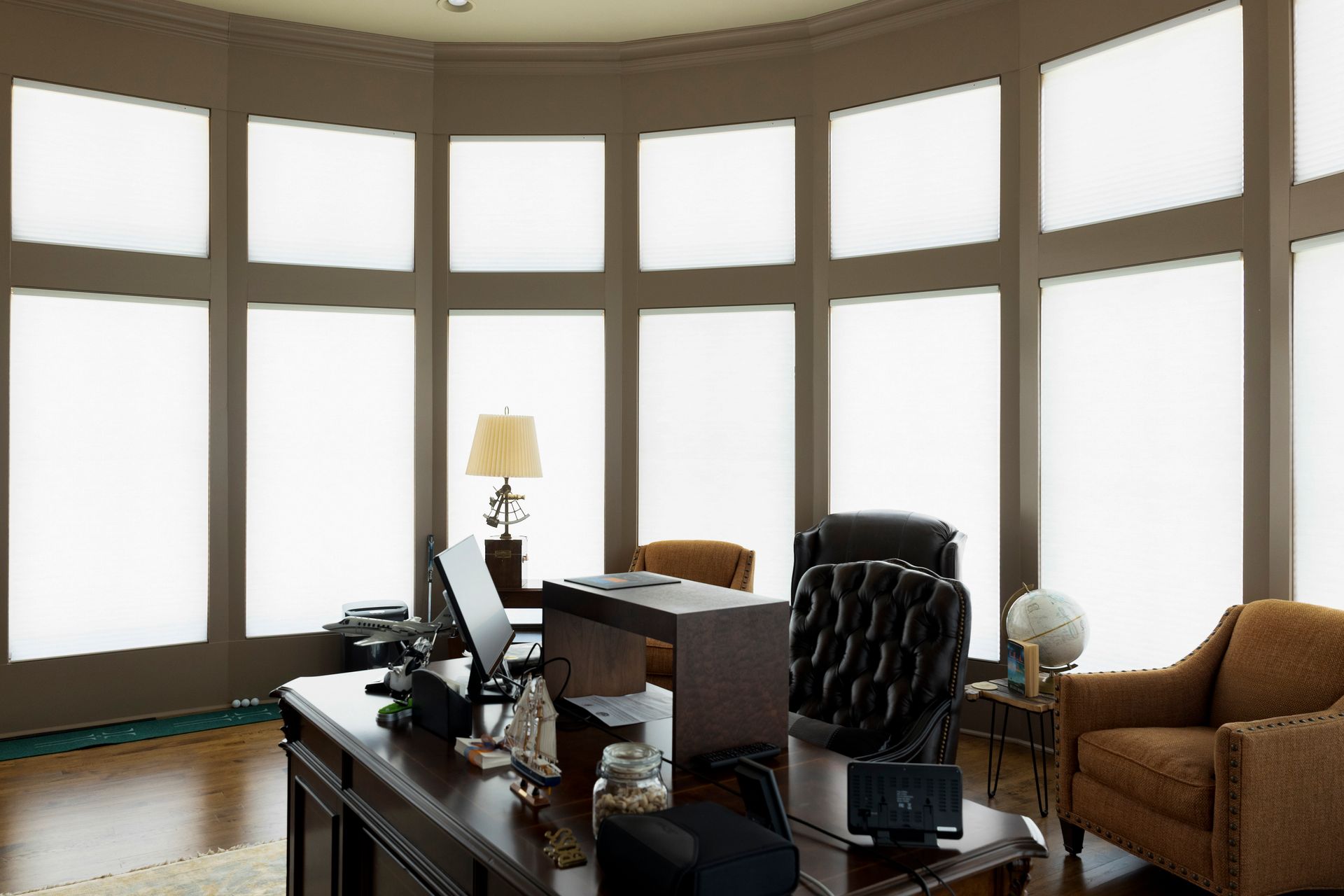Your home deserves to be personalized. The design should reflect your style, your favorite colors, and your personality to help you feel happy and comfortable in your own space. Of course, this is a little more challenging with rental homes. Some homes come with rules about how you can and cannot affect the walls, while some landlords don't care how you decorate, as long as the wall is whole and undamaged when you move out. Some leases include a no-holes decoration clause and many cautious renters avoid punching holes in rental walls for any reason.
So how do you truly make a rental home your own within the no-holes restrictions? We've got a few great strategies for modern renters to personalize, hanging curtains and artwork, within the comfortable bounds of your lease.
Clever Places to Put Decorations When Renting
- Windowsills and Half-Walls
- Tables and Shelves
- Along the Top of Appliances
- Free Standing Decor
Before you start worrying about the walls, decorate your surfaces. Find creative and decorative places to put your artwork throughout the house. Windowsills with plants and sculptures brighten your day as much as a framed painting, while free-standing art can be a 3-dimensional display without touching a single wall.
Your rental home might have a hearth and mantelpiece to decorate, or built-in shelves ready to show off your favorite art pieces. There are many ways to decorate a rental home that don't require wall suspension.
No-Damage Decorating Tips for Rental Homes
If you have a no-holes clause in your lease or your landlord specifically mentions not damaging the walls, you can still decorate! Mounting tape distributes the weight of a mounting point to hold heavier loads without punching a single hole. The only question is whether it comes away clean or with a layer of wall paint.
Command Strips & Mounting Tape
Command Strips are the 3M name brand no-damage mounting tape strips. It's basically foam two-sided tape that works on walls. With a pull-tab, they will detach from almost any surface without any damage, even to brittle paint. Command strips can also mount points like hooks and picture frame wire for diverse no-hole decorating options. You can also work with rolls of mounting tape, cutting strips as needed.
Adhesive Hooks and Clamps
If you want to hang things like curtains and window treatments, affix hooks and clamps to build attachments in your rental home. You can hang potted plants, workout equipment, and extra storage throughout the house, provided each hook and clamp connects securely. Don't forget to pad the back of the plastic or metal fixture so it doesn't scratch the paint. This is a great way to add curtain rods and other features to a plain looking house.
Shelves and Backdrop Furniture
You don't have to mount your decor directly to the wall with something between the wall and your decorations. Experiment with shelves and end-tables of various heights. Try displaying your art on shelves, or on the back of a bookshelf with the shelves removed. This way, your art is mounted to an item that belongs to you instead of the rental home wall.
To Drill or Not to Drill: Mounting Art and Tech
If you live in a rental home that allows standard decoration (the occasional nail hole), when and where is appropriate? And how much mounting is reasonable? Many of us take one look at drywall anchors and wonder if that's a good idea in a rental. The answer, first, depends on your lease. Then it depends on the security deposit risk. From there, you can make any plans that can be undone with a new coat of paint.
Ask yourself these questions:
- "Does the wall already have holes? Can you re-use them?"
- "Is the wall receptive to nails or screws?"
- "Will you need drywall anchors, and will they blend?"
- "How obvious will the hole left-behind be?"
- "How easily can I repair the hole?"
Interestingly, drywall anchors of the right color can be less obtrusive than an unadorned hole in the drywall. Be strategic when and where you choose to add a new hole - and how easily you can repair and touch-up any small changes you have made.
Cleaning Up After Decorating a Long-Term Rental
Longer-term tenants are more likely to hang semi-permanent decorations and install mounting points into the wall. In fact, years of built up wear-and-tear and steady rent provide for this choice. But when it comes time to move out, you want to leave those mounting points as nearly invisible as possible by filling and repainting each spot.
This method can help you repair and cover almost any size of mounting hole damage left in a rental home wall.
Fill Holes & Damage with Drywall Putty
Get a pot of drywall putty and a plastic putty knife, the kind with a flat square end. Apply a small scrape of putty over every nail and screw hole in the wall, whether or not you remember making it. If you repair a few extra spots, it only costs you a few seconds and secures your damage deposit either way. For each spot, use the flat edge of the putty knife to press putty into the hole and scrape it flat and flush against the wall. Remove excess putty as needed. Give the putty a few hours to dry and it'll be ready to repaint.
Repaint with Matching Interior Paint
Get a pot of paint that matches the home interior. This can be a very small supply, as long as the color and finish match. For each putty spot - and for every scuff and stain - add a fresh swipe of paint. Follow the grain of the existing paint to make your touch-ups blend in. Give this paint a protected day or two to fully dry and check your work.
Your rental home can be beautifully and personally decorated while still fully within the terms of your lease. Whether you cleverly use Your attention to detail ensures a return of your security deposit and win the good favor of your property manager - however you choose to decorate. Contact us today to explore more great decoration tips and custom window treatments for personalizing your home interior.
Expert Advice by Just Blinds


